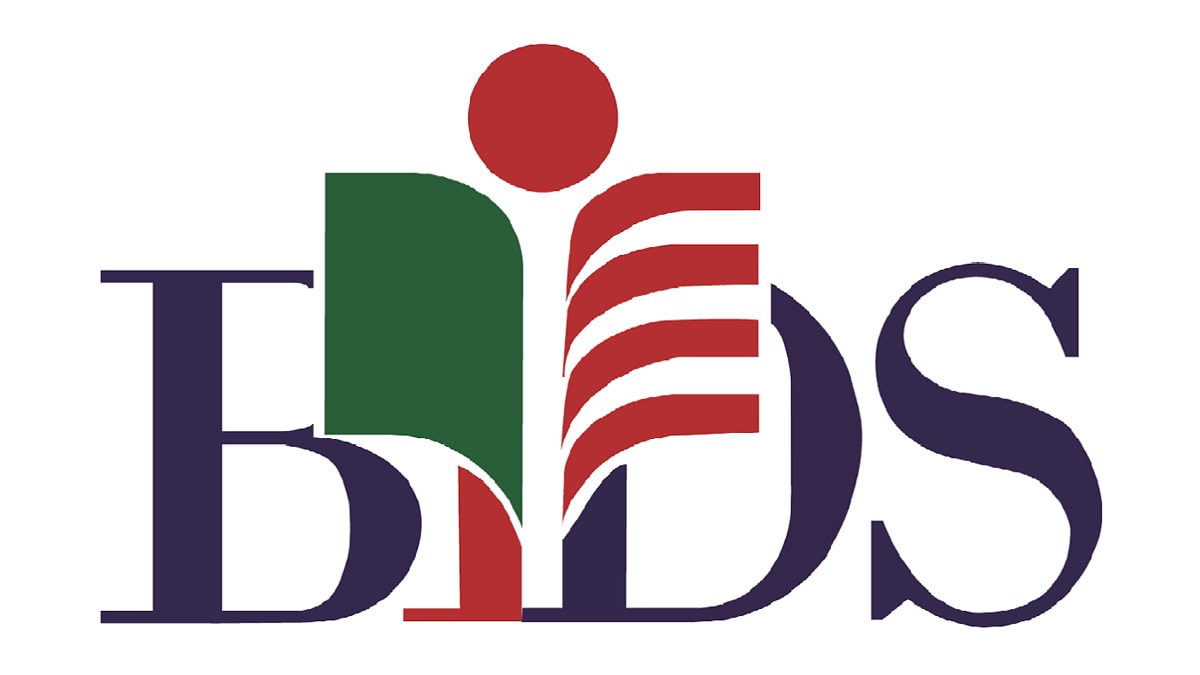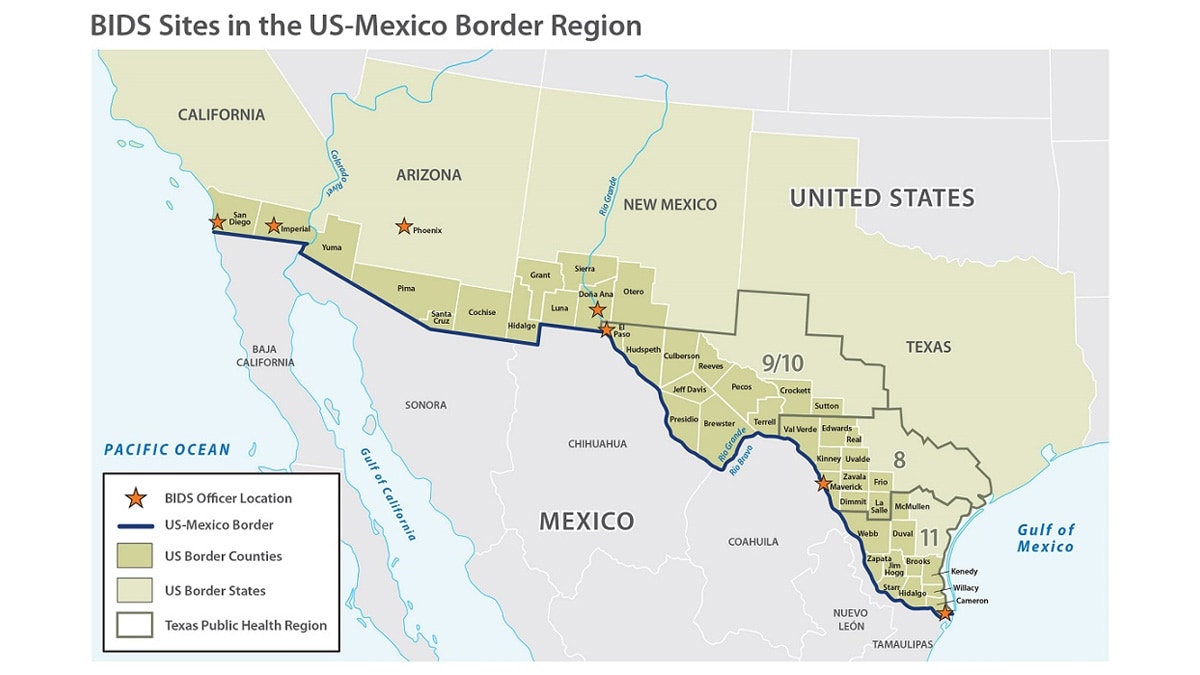At a glance
The Binational Border Infectious Disease Surveillance (BIDS) program works with U.S. states on the U.S.-Mexico border to improve binational detection, reporting, and prevention of infectious diseases.

About BIDS
The BIDS program is coordinated by CDC Division of Global Migration Health's (DGMH) Southern Border Health and Migration Branch. BIDS partners with the U.S.-Mexico Border Health Commission, an international leadership organization committed to improving health and quality of life along the U.S.-Mexico border. In alignment with the Global Health Security Agenda, BIDS projects address a wide range of priority diseases including COVID-19, influenza, tuberculosis, and vector-borne and foodborne diseases.
BIDS program goals
- Improve surveillance for infectious diseases of binational importance
- Develop strategies to control infectious diseases in the border regionA and advance health equity for populations experiencing disparities
- Strengthen implementation of the Operational Protocol for Binational Communication and Coordination on Disease Notifications and Outbreaks for bilateral infectious disease preparedness and response
Funding recipients
CDC DGMH provides funding to state public health agencies to address unique epidemiologic and disease detection and control needs of the diverse and dynamic border region. Projects involve local health agencies and other key partners. CDC provides technical assistance to funding recipients and facilitates coordination with the Mexico Ministry of Health.
2020–2024 Funding Recipients:
- Arizona Department of Health Services (ADHS)
- California Department of Public Health (CDPH)
- New Mexico Department of Health (NMDOH)
- Texas Department of State Health Services (DSHS)

BIDS activities
BIDS partners implement and enhance surveillance, communication, preparedness, and interventions to identify, report, and respond to binational disease cases and outbreaks.
Surveillance
BIDS partners tailor surveillance activities to local disease control priorities and may also conduct special projects to inform surveillance needs.
Examples include:
- Enhancing surveillance systems to identify binational cases
- Surveillance for respiratory illnesses, including influenza and COVID-19, in border communities and border-crossing populations
- Conducting surveys at land ports of entry to understand border crossers' mobility patterns, knowledge, attitudes, and practices related to infectious diseases
- Investigation of binational contacts for tuberculosis cases in Imperial County, California, and Mexicali, Baja California, Mexico
Communication and Preparedness
The BIDS program promotes systematic communication among partners and preparedness for infectious disease outbreaks. These activities prepare BIDS partners to detect and respond to illnesses and events of binational significance.
Examples include:
- Creation and adoption of the:
- Technical Guidelines for United States-Mexico Coordination on Public Health Events of Mutual Interest
- Operational Protocol for Binational Communication and Coordination on Disease Notifications and Outbreaks
- Infectious Disease Prioritization for Multijurisdictional Engagement at the United States Southern Border Region
- Technical Guidelines for United States-Mexico Coordination on Public Health Events of Mutual Interest
- Coordination and facilitation of public health preparedness exercises to build binational partnerships with Mexico and test communication pathways.
BIDS past to present
U.S. and Mexican federal and border state health authorities have been collaborating since 1999 to detect and monitor infectious diseases along the U.S.-Mexico border. Since then, the BIDS program has evolved to address changing epidemiologic and preparedness priorities. To learn more about how BIDS started, read the U.S.-Mexico Border Infectious Disease Surveillance Project: Establishing Binational Border Surveillance (2003)
- The U.S.-Mexico border region is made up of 44 counties across four U.S. states and 80 border municipios across six Mexican states within 100 km (62 miles) of the 2000-mile-long international border line.
